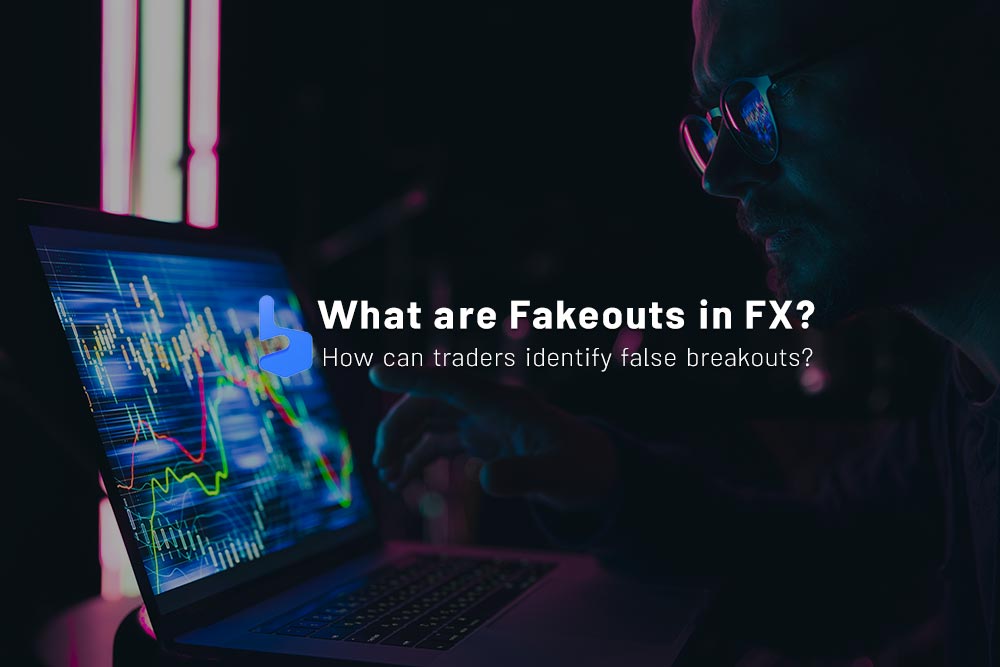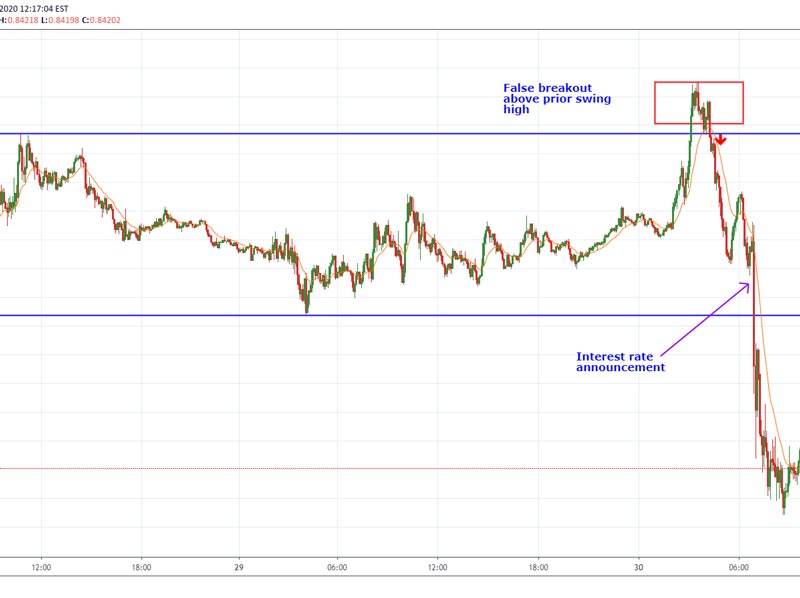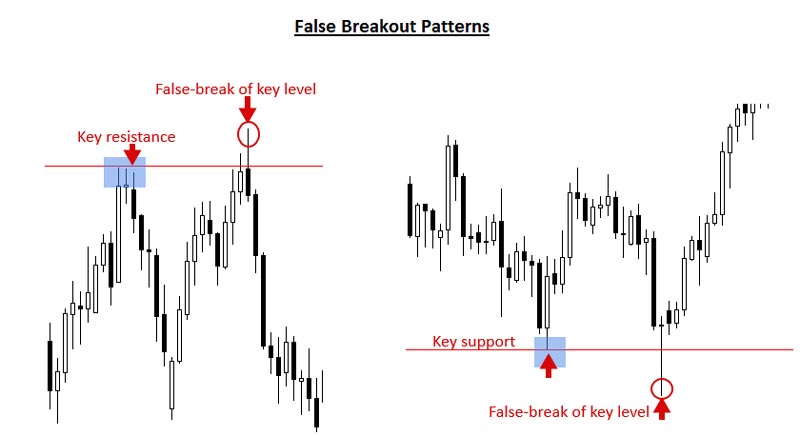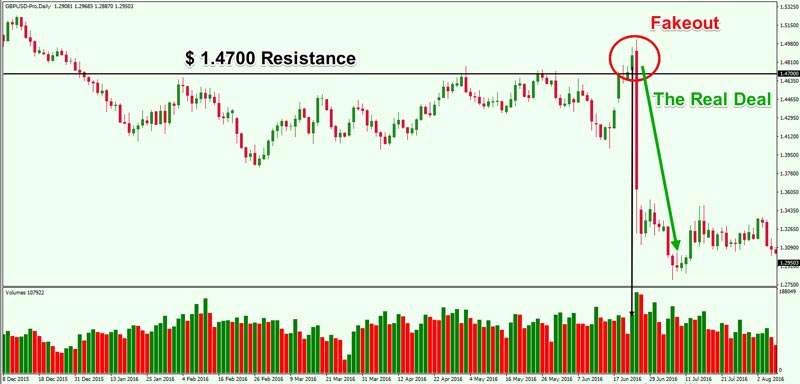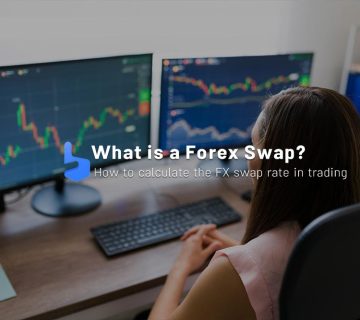What you are about to read:
Forex trading, the largest financial market in the world, provides numerous opportunities for investors to profit from currency price fluctuations. Successful forex trading involves the ability to identify and accurately interpret price movements.
However, amidst the dynamic nature of the forex market, traders often encounter challenges such as false breakouts. For traders looking to progress in this area, understanding what a fakeout is, its causes, and how to identify them is crucial. Follow along with Brokerland in this article to learn forex trading.
What is a false breakout?
A fakeout occurs when the price of a currency pair temporarily crosses a significant support or resistance level, only to quickly reverse direction and return to its previous trading range. These deceptive price movements can mislead traders into believing that a new trend is emerging, leading to costly decisions and losses. The reasons for these breakouts are as follows:
- Market manipulation: The forex or crypto market is not immune to market manipulation, with examples including pump and dump schemes in cryptocurrencies. Institutional traders or large market participants may deliberately trigger stop-loss forex orders placed just beyond key support or resistance levels to create a temporary price spike before reversing direction. This manipulation allows them to profit from the subsequent market movement, often at the expense of smaller traders.
- Lack of market liquidity: Periods of low trading volume, such as during holidays or significant economic events, and kill zones like interest rate announcements, inflation rate and unemployment rates, can exacerbate the occurrence of false breakouts. With fewer participants actively trading in the market, there may not be enough buying or selling pressure to sustain a genuine breakout. As a result, even minor trades can disproportionately impact price changes and lead to incorrect forex signals.
- Stop Hunting: Market makers and institutional traders may engage in stop hunting, a practice where they deliberately target clusters of stop-loss orders placed just beyond key support or resistance levels. By triggering these stop losses, they can create a temporary imbalance in supply and demand and cause a fakeout, leading to a rapid price movement in one direction before reversing course. This tactic allows them to profit from the cascading effect of stop-loss orders being executed. In a comprehensive article, we have taught ways to stay safe from such occurrences in the forex market.
Identifying and Managing Fakeouts
Just as knowing about scams like phishing and Ponzi schemes isn’t enough and we must know how to detect them to protect ourselves, now that we know such failures exist in the market, we must know ways to identify them and ways to avoid them.
Identifying and avoiding false breakouts is crucial for forex traders to protect their capital and improve their trading performance. While no method can guarantee complete immunity from fake breakouts, traders can employ several strategies to enhance their ability to identify and avoid them:
Wait for confirmation: One of the most effective ways to filter out false breakouts is to wait for confirmation before entering a trade. Traders can refrain from immediately reacting to a breakout signal and wait for the price to convincingly close above or below a support or resistance level on a higher timeframe, such as a daily or weekly price chart. Confirmation through a strong closing price increases the likelihood of a genuine breakout and reduces the risk of getting caught in these breakouts.
Use multiple timeframes: Analyzing price action across multiple timeframes can provide a more comprehensive view of market dynamics and help distinguish between false and genuine breakouts. Traders can look for confluence in price movements across different time intervals to confirm breakout signals. For example, if a breakout occurs on an hourly chart, traders can validate the breakout by examining price action at support levels on a four-hour or daily chart. This is the same multi-timeframe analysis we have taught in previous Brokerland articles.
Volume confirmation: Genuine breakouts often occur with increased trading volume, indicating strong market participation. Traders can use volume analysis to validate the credibility of a breakout. A breakout accompanied by high trading volume is likely genuine, whereas a breakout with low volume may indicate a false breakout. However, considering the average volume for a specific currency pair and time of day is essential as volume characteristics can vary. You can use the best volume indicator we have introduced for this purpose.
Use technical indicators: Combining various forex indicators can help traders identify potential fakeouts and confirm the strength of breakout signals. Indicators such as Relative Strength Index (RSI), Moving Average Convergence Divergence (MACD), and Stochastic Oscillator can provide insights into price movement and strength. Divergence between price and indicators or overbought/oversold conditions can indicate a false breakout.
Support and resistance analysis: Conducting a thorough analysis of support and resistance levels is essential for identifying potential breakout points and distinguishing between genuine and false breakouts. Traders can use tools like forex trend lines, horizontal support/resistance levels, and Fibonacci retracement levels to identify key price levels. Breakouts accompanied by strong support or resistance levels are likely genuine, while breakouts occurring in the absence of significant support or resistance may be false.
Avoid Trading in Low Liquidity Periods: Trading during periods of low liquidity, such as weekends, holidays, or major economic announcements, increases the risk of encountering false breakouts. During these times, market participants may be fewer, exposing the market to manipulation and erratic price changes. Traders can reduce their exposure to fakeouts by avoiding trading during low liquidity periods or adjusting their position sizes accordingly.
Risk Management: Implementing proper risk management techniques is essential to mitigate the impact of false breakouts on trading performance. Traders should always use stop-loss orders to limit potential losses and adhere to predefined risk/reward ratio. Additionally, traders can gradually enter positions instead of entering all at once, allowing them to evaluate the credibility of the breakout before fully committing.
As a result, identifying and avoiding false breakouts requires a combination of patience, fundamental analysis, and risk management. Traders can enhance their ability to detect and avoid fakeouts and gain more insights by waiting for confirmation, using multiple timeframes, analyzing volume, combining indicators, conducting thorough support and resistance analysis, avoiding low liquidity periods, and implementing effective risk management.
Which Strategies are Most Affected by False Breakouts?
False breakouts can significantly impact trading strategies that focus on identifying and investing based on price movements near key support and resistance levels. These strategies often involve breakout trades, where traders attempt to enter positions following a confirmed breakout from a significant price level. Here are some areas where paying attention to fakeouts is of particular importance:
Breakout Trading Strategies
The goal of breakout trading strategies is to profit from the continuation of a trend after exiting a consolidation phase. Traders typically enter long positions when the price breaks above a resistance level or short positions when the price breaks below a support level.
False breakouts can be detrimental to traders as they may result in premature entries or stop-loss orders being triggered, leading to losses when the price quickly reverses direction. Confirmation techniques, such as waiting for a close above or below the breakout level or using additional indicators, are crucial for traders to filter out fakeouts and confirm the validity of price movements.
Importance of Fakeouts in Reversal Trading
Reversal trading strategies involve identifying potential reversals at key support or resistance levels. Traders may find themselves in positions contrary to the prevailing trend when predicting reversals. False breakouts can deceive traders by creating incorrect signals of trend continuation instead of reversal.
Traders might mistakenly interpret these breakouts as confirmation of a trend reversal and enter positions prematurely. Traders should exercise caution and wait for confirmation signals, such as price rejection at support or resistance levels, or reversal harmonic patterns like double bottoms and double top, to avoid falling victim to fakeouts.
Range-bound Trading Strategies
Range-bound trading strategies aim to profit from price movements within defined trading ranges, buying near support and selling near resistance. False breakouts can disrupt trades by triggering premature entries or stop-loss orders when prices briefly exceed range boundaries before returning within the range. Traders may opt for tighter stop-loss orders or adopt a more conservative approach during periods of increased volatility to avoid getting caught in false breakouts.
Importance of False Breakouts in Scalping Strategies
Scalping strategies involve making quick trades to profit from small price movements. Scalpers often rely on short-term price patterns and movement indicators to identify trading opportunities. False breakouts can be particularly challenging for scalpers because they depend on rapid price movements for profit, and these failures can result in losses across multiple quick trades.
Scalpers may use tighter stop-loss orders and focus on trading during high-volume periods where the likelihood of fakeouts is lower.
As a result, false breakouts are significant considerations in breakout, reversal, range-bound, and scalping strategies. Traders employing these strategies must remain vigilant in distinguishing genuine signals from false ones and utilize appropriate risk management techniques to mitigate the impact of these breakouts on their trading performance.
Conclusion
False breakouts are common occurrences in forex trading and can pose significant challenges for traders. Traders can reduce their impact and enhance their ability to navigate the forex market successfully by understanding the underlying reasons for these failures and employing effective risk management strategies.
While fakeouts may test the patience and discipline of traders, they also provide opportunities for savvy market participants to capitalize on the mistakes of others. Ultimately, alertness, adherence to sound trading principles, maintaining a trading journal, and adaptability in response to changing market conditions are essential for achieving long-term success in forex trading.

